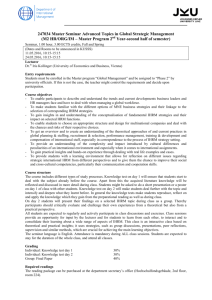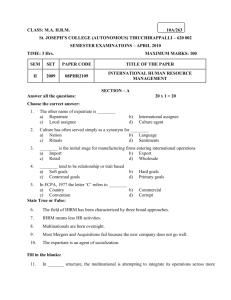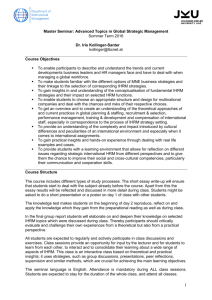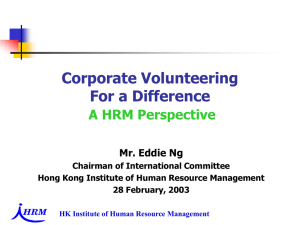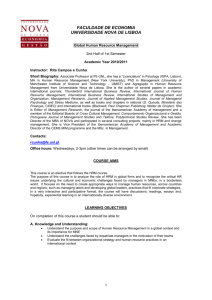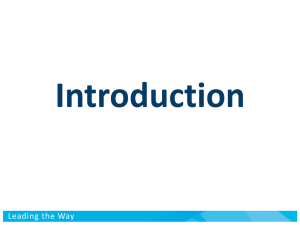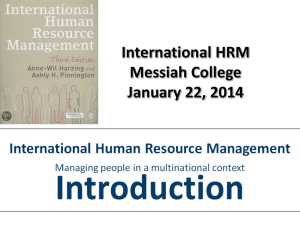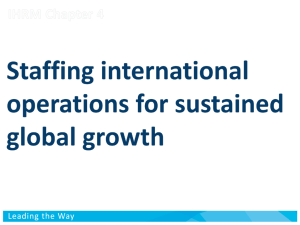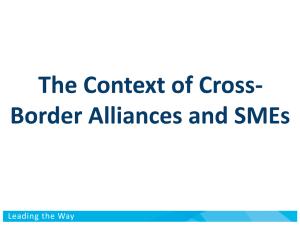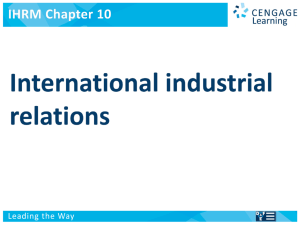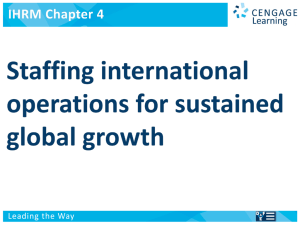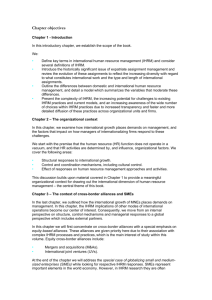Chapter12
advertisement
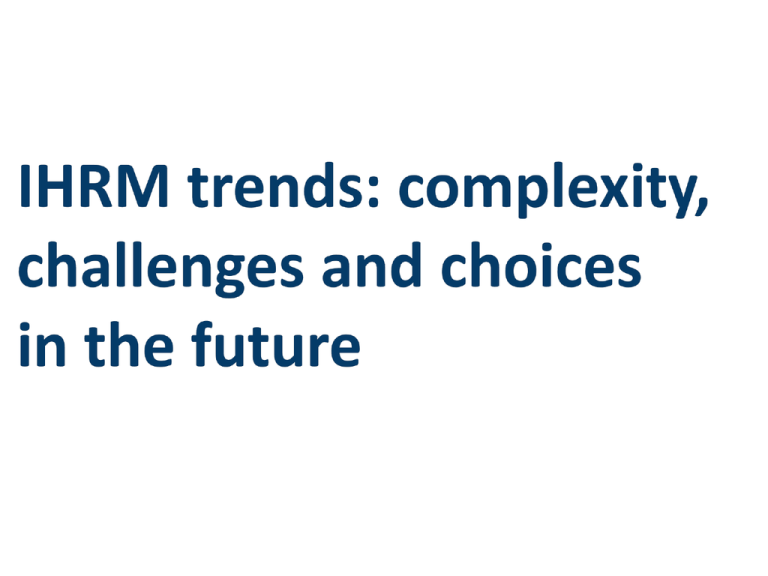
International Human Resource Management Managing people in a multinational context Chapter Objectives We identify and comment on observed trends and future directions: • International business ethics and HRM • Mode of operation and IHRM • Ownership issues relating to IHRM requirements of organizations other than the large multinational, such as: o family-owned firms o non-government organizations (NGOs) • Safety and security issues IHRM Chapter 12 2 Terms ethical relativist ethical absolutist ethical universalist family-owned firms NGOs SMEs strategic IHRM FCPA OECD IHRM Chapter 12 risk levels: primary micro macro Bribery ≠ gifts ≠ facilitating payments ‘critical incident’ defining culture emic-etic distinction static group design translation & stimulus equivalence 3 Figure 12-1 Returning to topics of strategic HRM in MNEs IHRM Chapter 12 4 Table 12-1 Transparency International Corruption Perceptions Index 2006 IHRM Chapter 12 5 Starting point areas for corporate risk assessment categories 1. In-facility emergency and disaster preparedness 2. In-facility security 3. Industrial espionage, theft, and sabotage 4. Cyberterroism 5. Out-of-facility fire and travel risks IHRM Chapter 12 6 Discussion Questions 1. What is your view of international initiatives to criminalize foreign bribery? 2. Identify a number of HRM problems that typically arise with expatriate assignments. In what ways might the core ethical values and guidelines identified in this chapter apply to them? 3. Why is management succession frequently an issue for familyowned firms? 4. Beyond checklists and systemic analysis, what actions can MNEs taketo reduce risks related to terrorism? What roles can HRM take in these processes? 5. What IHRM activities would be pertinent to the sending, by Médecins Sans Frontieres, of a medical team into a country such as Bangladesh? IHRM Chapter 12 7
